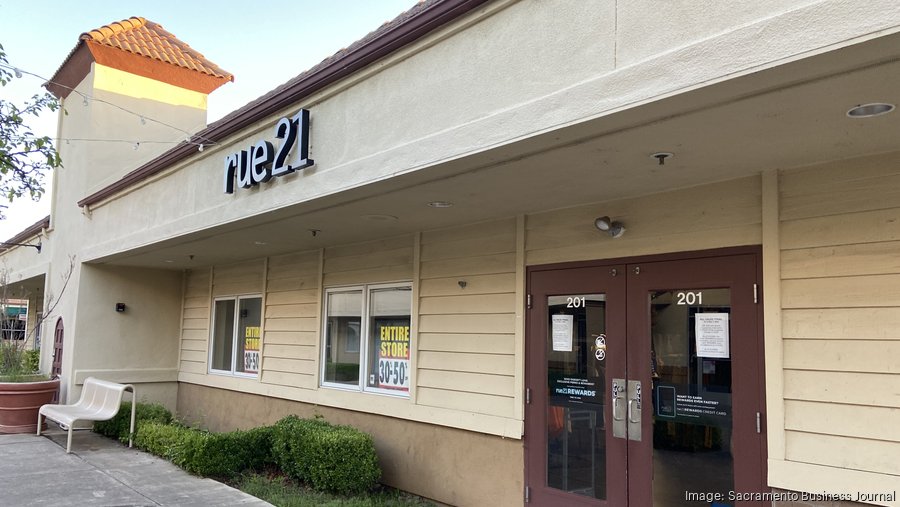Listen to this article 6 min
Welcome to The National Observer, a roundup of top business news and actionable insights from across The Business Journals. We'll take a look today at Walmart's decision to close down its health clinic business, how small businesses are rethinking real estate and the shifting fortunes of craft breweries. But we'll start with retailer Rue21 planning to close all its stores.
Get more stories like these every day in your inbox by subscribing to The National Observer newsletter.
Rue21 closing all stores after bankruptcy filing
Teen clothing retailer Rue21 plans to close all its stores and sell its intellectual property after having filed for bankruptcy a third time, reports Diana Barr of the St. Louis Business Journal.
STORE CLOSURES: The Warrendale, Pennsylvania-based retailer plans to shutter its roughly 540 primarily mall-based stores in the next four to six weeks. Rue21, which at one time had 1,000 brick-and-mortar stores, previously sought Chapter 11 bankruptcy protection in 2003 and 2017, and had closed hundreds of locations.
DEBT: The company owed about $194.4 million in debt at the time it filed for bankruptcy, according to a declaration to the court by interim CEO Michele Pascoe. The company had explored restructuring alternatives and even solicited bids for the company before filing for bankruptcy, Pascoe said.
BIG PICTURE: The trends that Pascoe says drove Rue21 to bankruptcy are not unique to that company. She said challenges from the pandemic alongside longer-term issues like a consumer shift from brick-and-mortar stores to online retailers pushed the company toward bankruptcy.
FULL STORY: Teen clothing retailer files bankruptcy for 3rd time, plans liquidation
Small businesses rethinking real estate needs
Small-business owners across America are faced with big questions in the aftermath of the pandemic and the sweeping changes it brought, reports The Playbook's Andy Medici — what kind of space, and how much of it, do they need? Perhaps most importantly, where should it be?
SHIFT: Some retailers are consolidating locations in order to cut costs and hone their focus on a smaller number of storefronts. Small businesses based out of offices instead of storefronts are now emphasizing smaller, more flexible spaces. They're keeping a physical office around for branding or collaboration purposes rather than a full-time spot for their employees to sit, according to analysis by Moody’s Analytics Inc.
SUBURBAN GROWTH: Suburban offices in some markets are faring better due to their proximity to local communities and, in some cases, shorter commute times. While suburban retail also took a hit during the pandemic, many such businesses have shifted from catering to commuters in the urban core to providing the services customers want closer to home.
THE FUTURE: It may not stay this way forever, though. “While some small businesses have explored suburban opportunities for lower costs and proximity to their customer base, others are gradually making a return to urban centers, attracted by reduced lease rates, less competition than pre-pandemic and the promise of contributing to the revival of city life,” said Teresha Aird, co-founder and chief marketing officer of Offices.net.
FULL STORY: Small-business owners are rethinking location decisions in the post-pandemic world
Walmart shutters health care clinic business
Walmart Inc. is shuttering its health clinic business and will close all Walmart Health centers and Walmart Health Virtual Care, reports Rachel Cohen Noebes of the Atlanta Business Chronicle.
FOOTPRINT: Walmart operates 51 Health centers in five states: Georgia, Texas, Arkansas, Illinois and Florida. The Bentonville, Arkansas-based retail giant launched Walmart Health in 2019.
WHAT HAPPENED? The company no longer sees its health clinic venture as a “sustainable business model," according to an announcement from the company. Walmart said a "challenging reimbursement environment and escalating operating costs create a lack of profitability."
CONTEXT: The reasons Walmart gave for the closure are the same headwinds plaguing more dedicated health care systems around the nation, where rising costs are outpacing reimbursement rates.
WHAT IT MEANS: The shift will let the company focus on its more mature pharmacy and optical businesses, but it could present challenges in some areas that were already suffering from reduced access to care.
FULL STORY: Walmart to close all Health centers
Craft brewers grab larger share of market
Craft brewers produced less beer in 2023 but they still managed to capture a growing share of a shrinking beer market, reports Dan Eaton of the Columbus Business Journal.
U.S. craft beer production was 23.4 million barrels in 2023, down 1% from the prior year and the first national decline aside from the Covid-19-impacted numbers from 2020. Still, craft brewers managed to grow their share of the total beer market by volume to 13.3%, up fom 13.1% in 2022.
Bart Watson, Brewers Association vice president of strategy and chief economist, said the share gain despite the production decline is due to the fact that the total beer market shrank by 5.1% last year, so the macro producers dropped by more than craft producers. Sales growth for craft brewers rose 3% to $28.9 billion in 2023. That is 24.6% of the market.
Watson said employment in the segment also is up in part because some breweries have become more “hospitality companies,” with offerings that go beyond just beer.
FULL STORY: Craft beer production fell, but share still grew in 2023





